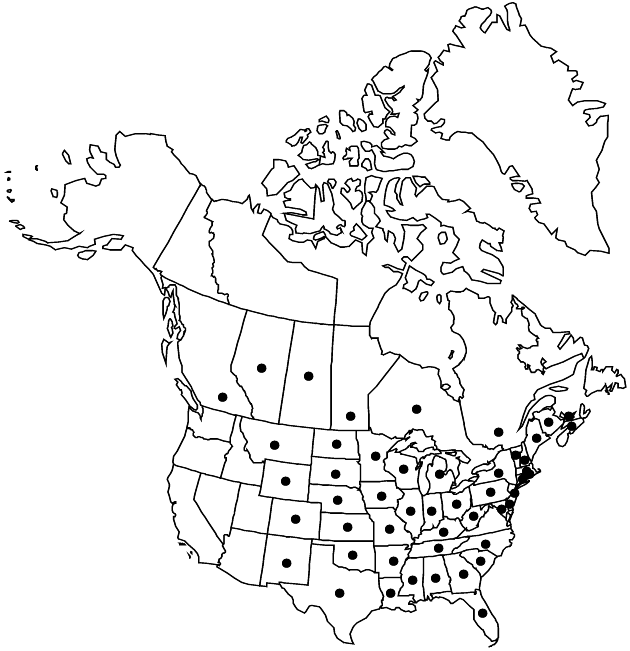Solidago nemoralis
Hort. Kew. 3: 213. 1789.
Plants 20–100 cm; caudices short-branched. Stems 1–6(–10), erect, short-canescent (hairs ascending to appressed). Leaves: basal and proximal cauline tapering to long, winged petioles, blades spatulate-ovate to oblanceolate, 20–95 × 7–15 mm, margins crenate to entire, apices acute, faces densely puberulent; mid and distal cauline (sometimes subtending axillary tufts of lateral branch leaves) sessile, blades linear-oblanceolate, 16–45 × 3–7 mm, reduced distally, margins entire. Heads 10–300, secund, in wandlike pyramidal, paniculiform arrays, secund to apically recurved, 8–25 × 2.5–10 cm, sometimes proximal branches elongate, repeating pattern. Peduncles 2–3.5 mm, bracteoles 0–4, linear. Involucres narrowly campanulate, 2.6–5.8 mm. Phyllaries in 3 series, ovate to linear-lanceolate, unequal, outer acute, inner obtuse. Ray florets 5–11; laminae 2.8–5.5 × 0.3–0.7 mm. Disc florets 3–10; 2.5–4.6 mm, lobes 0.4-0.6 mm. Cypselae (obconic) 0.5–2 mm, strigose; pappi 2–4 mm.
Distribution

Alta., B.C., Man., N.B., N.S., Ont., P.E.I., Que., Sask., Ala., Ark., Colo., Conn., Del., Fla., Ga., Ill., Ind., Iowa, Kans., Ky., La., Maine, Mass., Md., Mich., Minn., Miss., Mo., Mont., N.C., N.Dak., N.H., N.J., N.Mex., N.Y., Nebr., Ohio, Okla., Pa., R.I., S.C., S.Dak., Tenn., Tex., Vt., W.Va., Wis., Wyo.
Discussion
Subspecies 2 (2 in the flora).
The arrays can be elongate with ends bent nearly 90–180°.
Selected References
None.
Key
| 1 | Pappus bristles usually not or barely exceeding ray floret corolla tubes and bases of disc floret lobes; disc corolla lobes 0.5–0.9(–1) mm; involucres usually 2.6–4.2 mm (tetraploids have larger heads); cypselae usually only sparsely strigose; basal leaves usually crenate, oblanceolate to obovate; open areas and open woods in eastern deciduous forest | Solidago nemoralis subsp. nemoralis |
| 1 | Pappus bristles usually exceeding ray floret corolla tubes and bases of disc corolla lobes; disc corolla lobes (0.6–)0.8–1.5 mm; involucres usually 4.6–5.8 mm; cypselae moderately strigose; basal leaves usually not crenate, often linear-oblanceolate; prairies (rarely in forested areas) from Indiana westward to the Rocky Mountains, British Columbia to New Mexico | Solidago nemoralis subsp. decemflora |